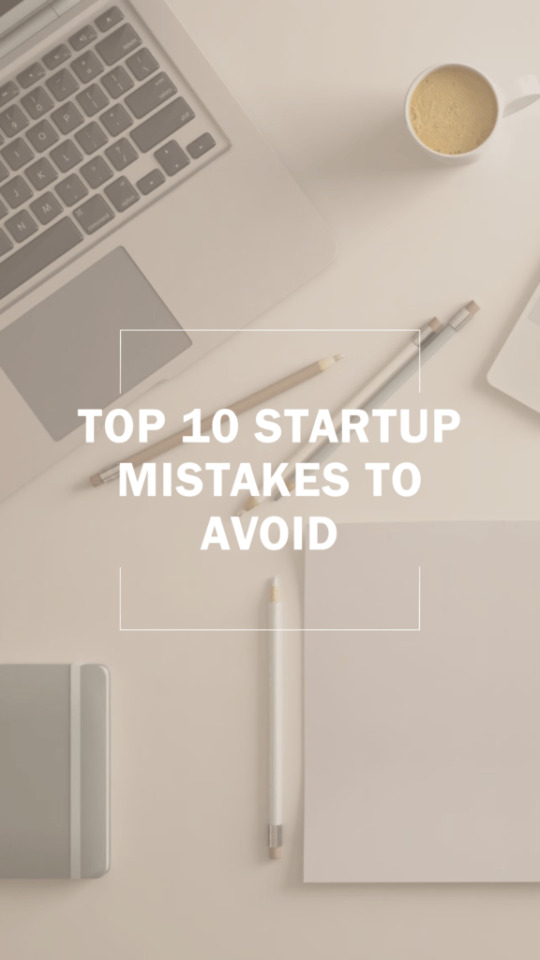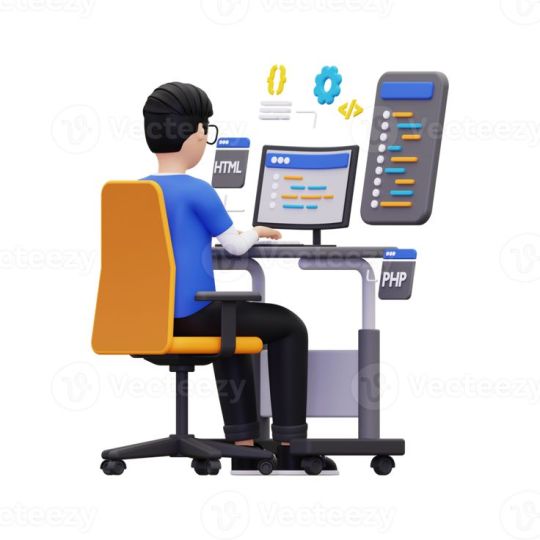#home essentials WordPress theme
Explore tagged Tumblr posts
Text
How Can the SKT Appliances Pro Theme Transform Your Home Appliance Store Online?
In the fast-paced world of digital commerce, appliance retailers face a common challenge: How can you stand out online in a crowded marketplace while making it easy for customers to find, trust, and purchase your products?
The answer lies in choosing a WordPress theme that understands your business and supports your goals from the ground up. That’s exactly what the SKT Appliances Pro – Home Appliances WordPress Theme is built to do.
Whether you’re an independent appliance store, a kitchenware brand, or a distributor for top brands, this theme can help you deliver a professional, user-friendly shopping experience that converts visitors into loyal customers.
Let’s explore how SKT Appliances Pro can elevate your store to new heights.
Designed with Appliance Retail in Mind
Not every WordPress theme is built for appliance sales. The SKT Appliances Pro theme is uniquely crafted to suit the structure and functionality of an appliance business. From its clean product grid layouts to specialized sections for promotions, this theme gives you the foundation for a strong first impression.
Key design features include:
Category-focused homepage sections (e.g., Kitchen, Cleaning, Electronics)
Featured banners for ongoing sales or seasonal discounts
Spacious layout with high-resolution product images
Modern typography that enhances readability
Professional color palette suited for hardware and electronics retail
This type of intuitive layout improves user navigation and keeps your site looking modern and trustworthy.
Built-In Tools to Drive Conversions
A good theme doesn’t just look great—it encourages action. SKT Appliances Pro is loaded with built-in tools that make it easier to convert casual browsers into paying customers.
These include:
“Add to Cart” and “Buy Now” buttons in strategic locations
Highlighted product ratings and reviews
Customer testimonials for social proof
Limited-time deal sections to create urgency
Email opt-in banners for lead generation
Each of these features contributes to higher engagement, longer session durations, and better sales metrics.
Seamless WooCommerce Integration
One of the biggest strengths of SKT Appliances Pro is its smooth integration with WooCommerce. You can quickly list your appliances, manage your inventory, and process transactions—all without technical hassles.
With WooCommerce, you get:
Flexible product listings with images, specs, and pricing
Support for coupons and discount codes
Multiple shipping and tax options
Compatibility with major payment gateways
Order tracking and customer communication tools
This makes it easier to scale your appliance business while keeping operations efficient and organized.
Optimized for Mobile Shoppers
Online shopping behavior has changed drastically—mobile devices now account for more than half of all eCommerce traffic. SKT Appliances Pro ensures your store looks perfect on smartphones and tablets with a responsive, mobile-first layout.
Features that support mobile users:
Tap-friendly buttons and product filters
Touch-enabled sliders and carousels
Lightweight code for fast mobile loading
Clear mobile navigation menus
This kind of optimization boosts the customer experience and gives you an edge in search engine rankings.
User-Friendly Customization with Elementor
Your store should reflect your brand, and with SKT Appliances Pro, that’s easy to achieve. The theme comes fully compatible with the Elementor Page Builder, allowing you to make layout and design changes using a simple drag-and-drop interface.
You can:
Add promotional banners, FAQs, or trust badges
Build seasonal landing pages for product bundles
Insert videos, guides, and downloadable manuals
Customize headers, footers, and widgets with ease
This flexibility is invaluable for brands that want to evolve their website without hiring a full-time designer.
Speed and SEO Optimization Built In
Speed and visibility are two essential components of a successful online store. A slow website drives customers away, and poor SEO means they may never find your store to begin with.
SKT Appliances Pro handles both challenges by offering:
Lightweight code and fast-loading assets
SEO-ready markup and structured data
Clean URL structures and mobile indexing support
Compatibility with popular SEO plugins like Yoast or Rank Math
These technical benefits translate into better Google rankings, higher traffic, and lower bounce rates.
Visual Product Storytelling
Selling appliances online is about more than just listing features—it’s about showing customers how the product fits into their life. This theme includes tools to help you tell compelling product stories.
You can include:
High-resolution photo galleries
Videos for installation or usage demos
User reviews with photos
In-depth product spec tables
Comparison sections with alternatives
This makes it easier for customers to research and make confident buying decisions right on your site.
Trust-Building Features for Higher Conversions
The more trust your website builds, the more confident shoppers feel about making a purchase. SKT Appliances Pro offers built-in elements that improve credibility and transparency.
These include:
Customer reviews and ratings
Money-back guarantee or warranty sections
Secure checkout and payment icons
Store policies and return guidelines
About us page with your business story
Trust-building isn’t just good UX—it directly impacts your conversion rate and average order value.
Local and Global Selling Capabilities
If your appliance business serves a local area, you can highlight store locations, service areas, and delivery options. Want to sell globally? This theme supports translation plugins and currency converters so you can adapt your store for international customers.
You’re not locked into one way of selling—this theme adapts as your business expands.
If you’re serious about growing your appliance store online, it’s time to invest in a website that reflects the quality of your products and the professionalism of your brand. The Home Appliances WordPress Theme offers a comprehensive, customizable, and performance-driven solution to help you succeed.
#home appliances WordPress theme#kitchen appliances WooCommerce site#smart home electronics theme#appliance store WordPress template#home gadgets WordPress site#refrigerator shop WordPress theme#microwave WooCommerce theme#washing machine WordPress site#electronic appliances WordPress#home electronics eCommerce theme#appliance showroom website#domestic appliances WordPress site#TV and audio WooCommerce template#small appliances website theme#air conditioner WordPress theme#household items WooCommerce site#online appliance store WordPress#modern kitchen electronics template#home essentials WordPress theme#household gadgets eCommerce site
0 notes
Text

I finally updated the tags list as well! Now all main tags are listed here.
If you click on "Main Tags" you will finds:
Characters (divided in Arthur's extended family, other knights and other characters):

General tags, resources and some old challenge or series of posts. For example I highlighted "downloads" and the tag "Arthurian short stories" where I tag collections of stories to describe what is found inside:

And finally some artists tags, mainly writers that I often tags, random tags, novels' titles that I tag frequently, musicians and painters:

I also added a small page for "Links", where I put some essential links (ex. the Camelot is My Home wordpress blog which I would use in an emergency if tumblr gets nuked).
Next, I really want to manage to fix the list of book recs (we'll see if I find a javascript free theme), some more character-specific recs and the list of musicals/opera.
16 notes
·
View notes
Text
What is a Website? A Complete Beginner’s Guide

In today’s digital age, having an online presence is not a luxury — it’s a necessity. Whether you're a business owner, content creator, or just someone curious about the web, understanding what a website is and how it functions is essential. In this guide, we’ll cover everything you need to know about websites, their components, types, benefits, and how to create one.
What is a Website?
A website is a collection of publicly accessible web pages that are linked together and share a single domain name. These pages are hosted on a web server and can include text, images, videos, forms, and other elements that users interact with online.
In simpler terms, a website is your virtual space on the internet — like your home or office in the digital world. It allows you to communicate, sell, educate, entertain, or showcase anything to a global audience.
Why is a Website Important Today?
In a world dominated by smartphones, search engines, and social media, a website acts as your central hub online. Here's why it’s important:
Visibility: A website helps you appear in search results when people look for your products, services, or information.
Credibility: A professional-looking site builds trust among your audience.
Accessibility: Your website is available 24/7, allowing customers to reach you anytime.
Marketing: It's the foundation for all your digital marketing efforts.
Sales: With e-commerce, your website can directly generate revenue.
Core Components of a Website
Every website has several key components that make it function properly:
1. Domain Name
This is your site’s address (e.g., www.digitalcreator.org.in). It’s what users type in their browser to visit your site.
2. Hosting Server
Web hosting stores your website’s data and serves it to users when requested.
3. Content Management System (CMS)
A CMS like WordPress, Joomla, or Shopify makes it easy to build and manage content on your website without coding.
4. Web Pages
These include the homepage, about us, contact, services, blog, etc., that make up your website.
5. Navigation
Menus and internal links guide visitors through your website.
Types of Websites
Different websites serve different purposes. Here are some common types:
1. Business Website
Used by companies to promote services, share information, and connect with clients.
2. E-commerce Website
Allows users to buy and sell products online. Examples include Amazon and Flipkart.
3. Portfolio Website
Ideal for creative professionals to showcase their work.
4. Blog or Personal Website
Used by individuals to share ideas, stories, or niche content regularly.
5. Educational Website
Used by schools, institutions, or educators to provide learning materials.
6. Non-profit or Government Website
Focused on delivering information and services to the public.
How to Create a Website (Step-by-Step)
Creating a website doesn’t require you to be a tech expert. Follow these steps:
Step 1: Choose a Domain Name
Pick a short, relevant, and memorable domain name. Make sure it reflects your brand or purpose.
Step 2: Get Web Hosting
Choose a reliable hosting provider like Bluehost, SiteGround, or Hostinger.
Step 3: Select a CMS or Website Builder
Use platforms like WordPress, Wix, or Shopify to start building your website.
Step 4: Design Your Website
Choose a theme or template. Customize colors, fonts, and layout to match your brand.
Step 5: Add Content
Create and publish pages like Home, About, Services, and Contact. Use quality visuals and optimized text.
Step 6: Optimize for SEO
Use keywords (like website) naturally, optimize images, and ensure fast load speed.
Step 7: Launch and Promote
Once satisfied, make your website live. Share it on social media and start your SEO or ad campaigns.
Best Practices for a Great Website
Responsive Design: Ensure your site works well on all devices.
Fast Loading Speed: Use compressed images and optimized code.
Clear Navigation: Make it easy for users to find what they need.
Secure (HTTPS): Use an SSL certificate to protect data.
Call-to-Action (CTA): Guide visitors toward actions like “Buy Now” or “Contact Us.”
Examples of Great Websites
A well-designed and fully functional example is www.digitalcreator.org.in. It demonstrates how a website can showcase services, build trust, and attract new clients efficiently.
LSI Keywords to Keep in Mind
While writing or optimizing your website, include these Latent Semantic Indexing (LSI) keywords to enhance search performance:
Web design
Online presence
Website development
Internet site
Web page
Digital platform
Domain and hosting
CMS (Content Management System)
Website builder
E-commerce site
Frequently Asked Questions (FAQs)
1. What is the purpose of a website?
A website helps individuals or businesses share information, sell products, provide services, or connect with others online.
2. How much does it cost to build a website?
Costs vary based on design, features, and hosting. Basic websites can cost as low as ₹3,000–₹10,000, while advanced ones may go up to ₹1 lakh or more.
3. Do I need coding skills to create a website?
No. Tools like WordPress or Wix allow you to build a full website without writing any code.
4. How long does it take to build a website?
A simple website can be built in 1–2 days. More complex sites may take a few weeks.
5. What makes a website successful?
A successful website is user-friendly, fast, mobile-optimized, secure, and offers valuable content with clear calls-to-action.
Conclusion
Understanding what a website is is the first step toward establishing your digital footprint. Whether you're planning to launch a personal blog, online store, or professional portfolio, your website will serve as the foundation of your online presence.
If you're ready to build or improve your website, visit www.digitalcreator.org.in — your one-stop destination for digital marketing and website development solutions.
2 notes
·
View notes
Text
Best Web Design and Hosting for Small Business
User experience (UX) is a top priority for a successful small company website. This features responsive layouts that guarantee smooth surfing across devices, clear information hierarchy, and easy navigation. Websites should captivate users with eye-catching graphics, excellent photos, and interactive features that are consistent with the brand's identity. For small businesses looking to establish a strong online presence, investing in quality web design and reliable hosting is paramount.
Creating a powerful brand identity is essential. In order to create a unified image that makes an impression on visitors, this entails using logos, colors, and font consistently throughout the website. Retaining user interest also requires interesting material that speaks to the demands of the target audience, including educational blog entries and captivating product descriptions.
How to Make a Website for a Small Business
Select a User-Friendly Website Builder: Website construction is made easier by the intuitive interfaces of platforms like as Squarespace, Shopify, and Wix. Because these builders frequently have drag-and-drop capabilities, consumers can alter their websites without knowing any code23.
Choose a Domain Name and Register It
A memorable domain name is crucial for internet branding and represents your company's identity. Make sure it is pertinent to your services and simple to spell.
Select a Trustworthy Web Hosting Provider
The performance of the website depends on the hosting provider selection. Important things to think about are:
Uptime Promise: To reduce downtime, look for hosts that have 99.9% uptime.
Loading Speed: To improve user experience, try to keep page load times under three seconds.
Features of Security: To safeguard your site2, be sure the server offers SSL certificates, frequent backups, and virus detection.
Customer service: For prompt problem solving, round-the-clock assistance can be essential.
Create the Visual Identity for Your Website
Make an eye-catching layout that complements the style of your brand. Make use of top-notch photos and keep design components consistent.
Plan the Navigation and Site Structure
Logically arrange your information to make it easier to navigate. A site with a clear structure makes it easier for people to find information fast.
Create Key Pages
Home, About Us, Services/Products, Blog, and Contact Us are all important pages. Every page should contribute to the general objectives of the website while fulfilling a distinct function.
Top Web Design Platforms for Small Businesses
WordPress:
Flexible and customizable with thousands of plugins and themes.
Ideal for businesses looking for scalability and SEO features.
Wix:
Drag-and-drop functionality for easy website creation.
Suitable for businesses without technical expertise.
Squarespace:
Modern templates and built-in e-commerce features.
Perfect for visually appealing designs.
Shopify:
Best for small businesses focused on e-commerce.
Features include inventory management, payment integration, and analytics.
Weebly:
Affordable and user-friendly.
Ideal for small businesses needing basic functionality.

#Best Web Design and Hosting for Small Business#website#website design#seo services#digital marketing#web design#web development#usa news#usa
3 notes
·
View notes
Text
How to Turn Your Online Business Dreams into Reality


Introduction: The Digital Frontier of Entrepreneurship Selecting a Niche and Business Model: The Foundation of Success Building Your Online Platform and Brand: Your Digital Headquarters Creating High-Demand Products and Services: Delivering Value to Your Audience Implementing Effective Marketing Strategies: Attracting Targeted Traffic Diversifying Revenue Streams for Maximum Profits: Building Financial Stability Optimizing for Maximum Profitability Long-Term: Building a Sustainable Business Conclusion: Turning Dreams into Reality True successful story
Introduction: The Digital Frontier of Entrepreneurship
In today's digital age, the rise of the internet and technology has revolutionized the way we do business. It has opened a world of opportunities for entrepreneurs to start and run their own businesses online. Online businesses offer flexibility, scalability, and the potential for global reach. This comprehensive guide will provide you with a step-by-step framework for building a profitable online business from the ground up. Whether you want to start a side business or build a full-time online empire, follow this ultimate guide to turn your idea into a thriving, sustainable online business. With focus, grit, and commitment to continuous improvement, you can build the profitable online business of your dreams.
Selecting a Niche and Business Model: The Foundation of Success
The foundation of every successful online business is choosing a profitable, in-demand niche and a business model tailored to your goals. Select a niche you're passionate about; this will make creating content a breeze. Conduct thorough keyword research to assess search volume and demand. Join relevant online communities to connect with your audience and understand their needs. Evaluate direct competitors in the niche and aim for less saturated niches or unique angles. Consider affiliate marketing potential, as some niches offer higher commissions. Assess opportunities to create multiple products and monetize in diverse ways. Examples of popular online business niches include health, fitness, personal finance, pet care, tech, travel, content marketing, home design, spirituality, language learning, and more. Choose a business model that complements your niche and provides multiple income stream opportunities. Many successful online businesses incorporate 3-4 monetization models. Some of the best online business models to consider include: 1. Blogging: Make money with display ads, affiliates, and branded products. 2. Online Courses: Sell your knowledge and expertise as courses. 3. Dropshipping: Curate and sell products without inventory. 4. Affiliate Marketing: Earn commissions promoting other companies' products. 5. Information Products: Sell online books, templates, checklists, and more. 6. Virtual Services: Provide consulting, freelancing, coaching, or other services. 7. Subscription Membership Site: Offer exclusive content or tools for a monthly fee. 8. E-commerce Store: Sell physical products, merchandising, and more. Your choice should complement your niche and offer multiple income streams. Many successful online businesses incorporate 3-4 monetization models.
Building Your Online Platform and Brand: Your Digital Headquarters
Your website or blog will serve as the headquarters for your online business. Invest time upfront in creating an optimized, professional-looking platform. Purchase a domain name that matches your brand, ideally a .com if available. Select reliable web hosting with optimal speed and uptime. Install WordPress or ecommerce platforms like Shopify or WooCommerce. Design an on-brand, mobile-responsive theme that conveys your style. Include essential pages like Home, About, Contact, Services, Blog, and Shop. Set up email marketing and analytics to capture leads and track traffic data. Create visually branded assets such as logos, color palettes, fonts, and graphics. Ensure a cohesive user experience across all touchpoints. If you lack web development skills, consider hiring a freelance designer to bring your vision to life. Continually optimize your website for higher traffic, leads, and sales over time. This includes technical enhancements, user experience improvements, and page speed optimizations.
Creating High-Demand Products and Services: Delivering Value to Your Audience
The key to running a profitable online business is consistently creating products and services that deliver extreme value to your audience. Popular digital products you can create include online courses, eBooks, guides, checklists, software, premium memberships, virtual events, video tutorials, templates, and more. When brainstorming products, look for opportunities to simplify lives, save time, educate, entertain, or improve outcomes for your target customers. Leverage your expertise and tap into the skills of others to create premium offerings. High-value services like consulting, freelancing, coaching, and more can also be extremely lucrative. Promote your services through your website and social platforms. Structure your offerings to passively earn income over time, such as online courses that continually generate sales vs. 1-on-1 services that require ongoing effort. Deliver an excellent user experience across your products and relentlessly optimize based on feedback to foster raving fans who refer others.

Implementing Effective Marketing Strategies: Attracting Targeted Traffic
Once your online platform and offerings are ready, it's time to start attracting targeted traffic using proven marketing tactics. A diverse marketing mix is key. Some of the top strategies include: 1. Content Marketing: Create engaging blog posts, videos, and visual content. 2. SEO: Optimize your website for search engines through on-page optimization and link-building. 3. PPC Ads: Utilize platforms like Google, Facebook, Instagram, and YouTube for pay-per-click advertising. 4. Email Marketing: Build your email list with lead magnets, newsletters, and automation. 5. Social Media Marketing: Employ organic and paid tactics to engage your audience. 6. Affiliate Marketing: Recruit others to promote your products and earn commissions. 7. Influencer Partnerships: Collaborate with relevant influencers in your niche. 8. Live Events: Host local meetups or virtual events to connect with your audience. 9. Podcast Guest Appearances: Grow your authority and reach new audiences. 10. Retargeting Ads: Remarket to previous site visitors across the web. Start by focusing on 1-3 core channels, then expand your efforts over time. Pay-per-click and social ads can help quickly scale an audience, while SEO and content creation tend to be most cost-effective in the long-term. Leverage tools like Google Analytics, Facebook Business Suite, and landing page builders to optimize results across all campaigns. Don't hesitate to enlist help from digital marketing agencies and specialists.
Diversifying Revenue Streams for Maximum Profits: Building Financial Stability
Generating multiple streams of revenue is key for building a highly profitable online business. Diversification reduces risk and provides stability as each income channel goes through ups and downs. Here are some of the most lucrative online business revenue models: 1. Product/Service Sales: Your core monetization stream. Ensure competitive yet profitable pricing. 2. Advertising: Display ads, sponsorships, native advertising, etc. Set up Google Ad Manager. 3. Affiliate Marketing: Promote other company's products for commissions. Join affiliate networks. 4. Memberships/Subscriptions: Offer exclusive benefits, content, or tools for a monthly fee. 5. Events: Sell tickets for online or in-person events and training programs. 6. Dropshipping: Curate and sell products without holding inventory. 7. Physical Merchandise: Sell branded products with print-on-demand services. 8. Consulting/Freelancing: Sell your skills and expertise through 1-on-1 services. 9. Tip Jars/Donations: Allow fans to tip or donate to show support. Aim to generate income from both active efforts like service packages and passive streams like online courses that earn as you sleep. Automate processes wherever possible to scale income without increasing workload proportionally. Reinvest profits back into growing your business and diversifying income channels to create an unstoppable snowball effect over time.



Optimizing for Maximum Profitability Long-Term: Building a Sustainable Business
Launching a profitable online business is an important first step. However, creating systems and processes that enable high profitability long-term is vital for sustaining growth. Here are some best practices for optimizing operations and profitability: - Obsessively track KPIs and metrics for all marketing channels and funnels. Analyze data to optimize underperforming areas. - Create excellent customer support systems. Provide prompt, personalized support to increase satisfaction and referrals. - Automate repetitive tasks wherever possible with tools like Zapier. Automate lead collection, customer onboarding, analytics, inventory management, etc. - Systematize your product creation process to quickly test and validate new product ideas, then scale those that resonate. - Document your systems and processes so future hires can replicate them. This includes SOPs for customer service, product fulfillment, etc. - Build a skilled team over time by hiring virtual assistants, freelancers, agencies, and eventually full-time employees. Focus on higher-level strategy. - Maintain work-life balance as a long-term entrepreneur. Make time for adequate rest, leisure, and self-care to avoid burnout. By staying agile, embracing innovation, and relentlessly providing value to your audience, you can build an online business that delivers meaningful income for decades to come.



Conclusion: Turning Dreams into Reality
Starting and running a profitable online business takes consistent effort and persistence. However, by zeroing in on a niche, selecting the right model, crafting high-value offerings, implementing diverse marketing strategies, diversifying your revenue streams, and optimizing for maximum efficiency, you can build an online business that provides freedom and fulfillment for years to come. Remember to stay obsessively focused on understanding and serving your target audience. Combine your passion with grit, resilience, and creativity. With the right mindset and business foundations in place, you have immense potential to build a thriving online business that stands out and makes a lasting impact. The time to stop dreaming and start taking action is now. Follow this comprehensive guide to turn your online business idea into reality, step-by-step. You can build an online empire that allows you to live life on your terms. The possibilities are truly endless if you commit to continuous learning and improvement. Let this guide spark the fire within and set you on the path to online business success. Start pursuing your online entrepreneur dream today.


True successful story
To illustrate the principles and strategies discussed in this comprehensive guide, let's delve into the inspiring true story of Pat Flynn and his online business, Smart Passive Income. Smart Passive Income - About Pat Flynn Background: Pat Flynn was once an aspiring architect who unexpectedly found himself laid off during the economic downturn in 2008. Faced with uncertainty, he turned to the online world to seek alternative income sources. His journey began with a blog, which he aptly named Smart Passive Income (SPI). Selecting a Niche and Business Model: Pat recognized that there was a significant demand for information about creating online businesses and generating passive income. He was passionate about sharing his experiences, both successes and failures, and helping others navigate the world of online entrepreneurship. Pat's chosen niche was personal finance, but his business model extended beyond blogging. Building Your Online Platform and Brand: Pat invested in creating a professional-looking platform for SPI. He purchased a domain name, set up reliable web hosting, and designed an appealing website. His commitment to providing value was evident through the content he produced on his blog, podcast, and YouTube channel. His brand, Smart Passive Income, became synonymous with transparency, authenticity, and actionable advice. Creating High-Demand Products and Services: One of Pat's significant successes came from his creation of online courses and informational products. He developed courses on topics like email marketing, affiliate marketing, and podcasting, leveraging his expertise and audience trust. These products delivered immense value to his audience and contributed significantly to his income. Implementing Effective Marketing Strategies: Pat's marketing strategy was built on content marketing, podcasting, and email marketing. He consistently produced high-quality blog posts and podcasts, which not only attracted a dedicated audience but also positioned him as an industry expert. His email list grew as he offered valuable lead magnets and nurtured his subscribers. Diversifying Revenue Streams for Maximum Profits: Pat's income streams diversified over time. In addition to course sales, he earned from affiliate marketing, book sales, and speaking engagements. He also ventured into software development, creating tools like the Smart Podcast Player. This diversification provided stability and mitigated risk. Optimizing for Maximum Profitability Long-Term: Pat was relentless in optimizing his operations. He regularly analyzed data and user feedback to improve his products and content. His team expanded as the business grew, allowing him to focus on strategic decision-making. Pat prioritized work-life balance, emphasizing family and well-being. Conclusion: Pat Flynn's journey from unexpected job loss to the creation of a successful online business, Smart Passive Income, serves as an inspiring real-life example of the principles discussed in this guide. His dedication to providing value, commitment to continuous improvement, and willingness to diversify income streams are key takeaways for anyone aspiring to build a thriving online business. Pat's story reminds us that with the right mindset and a clear vision, online entrepreneurship can lead to a fulfilling and prosperous career.


Read the full article
#business-model#guide#marketing#niche#online-business#products#profitability#revenue#services#Success
5 notes
·
View notes
Text
How to Design a Mobile-Responsive WordPress Site

As mobile internet usage continues to rise, having a mobile-responsive website is no longer optional—it’s essential. For businesses using WordPress, designing a mobile-responsive site is critical not only for user experience but also for SEO rankings, engagement, and conversions. Especially in the world of online selling, responsive design directly impacts how customers interact with your brand across devices.
Whether you’re launching a new website or revamping an existing one, creating a responsive experience is key to offering successful WordPress e-commerce solutions. This blog outlines how to build a mobile-responsive WordPress site that adapts smoothly across screens while maintaining performance and usability.
1. Start with a Mobile-Responsive WordPress Theme
The foundation of any mobile-responsive website is the theme. Choosing a theme that’s already optimized for mobile responsiveness saves time and effort. Look for modern WordPress themes that:
Automatically adjust layout and elements based on screen size
Support flexible images and fluid grids
Are compatible with popular page builders like Elementor or Gutenberg
For WordPress e-commerce solutions, select a theme that integrates well with WooCommerce and has built-in responsive features for product pages, shopping carts, and checkout processes.
2. Use a Mobile-First Design Approach
A mobile-first approach means designing for smaller screens first and then scaling up for larger devices. This ensures that the most essential content and functionality are prioritized for mobile users.
Start by identifying key user actions on mobile—such as browsing products, reading descriptions, or completing purchases—and make those features easy to access. Keep layouts clean, navigation simple, and content concise to reduce friction on mobile devices.
Businesses offering WordPress e-commerce solutions often focus on optimizing product displays, mobile-friendly menus, and fast-loading checkouts to reduce cart abandonment on smartphones.
3. Optimize Images and Media for Speed and Responsiveness
Images are often the largest content elements on a site and can slow down load times if not properly optimized. Use these best practices to ensure images load quickly and adapt to screen size:
Compress images without losing quality using tools or plugins
Use responsive image formats like WebP
Enable lazy loading so images load only as users scroll
Faster mobile loading times enhance the overall user experience, which is critical for conversion-driven WordPress e-commerce solutions.
4. Streamline Navigation for Mobile Users
Navigation on mobile devices needs to be intuitive and thumb-friendly. Complicated menus or hard-to-click links can frustrate users and cause them to leave your site.
To design better mobile navigation:
Use collapsible (hamburger) menus
Keep menu items minimal and well-organized
Add a sticky header with essential links like Home, Shop, and Cart
Well-structured mobile navigation plays a significant role in how easily customers can move through your WordPress site and complete actions, particularly in e-commerce environments.
5. Prioritize Mobile Checkout Experience
Mobile responsiveness is especially crucial during checkout. A slow, cluttered, or confusing mobile checkout process can directly result in lost sales.
To create a mobile-friendly checkout:
Minimize form fields and use auto-fill wherever possible
Use large, clearly labeled buttons
Offer multiple payment options, including mobile wallets
Ensure checkout pages are fully responsive on all screen sizes
When developing WordPress e-commerce solutions, refining the mobile checkout is one of the highest-impact areas for increasing conversion rates and customer satisfaction.
6. Use Responsive Plugins and Page Builders
Not all plugins are mobile-optimized. When adding features to your WordPress site, choose plugins that are built with responsive design in mind. This includes:
Sliders and carousels that adapt to screen width
Contact forms that resize correctly on mobile
Page builders that offer responsive editing controls
Plugins used for WordPress e-commerce solutions, such as WooCommerce, typically offer responsive default layouts, but customization should be tested thoroughly to ensure consistent performance on all devices.
7. Test Your Site Across Devices and Browsers
Responsive design requires regular testing across different devices and screen sizes. Tools like Chrome DevTools, BrowserStack, or real device testing help identify layout issues, broken elements, or performance problems.
Pay special attention to:
Typography and spacing on smaller screens
Button sizes and tap targets
Product grids and image alignment
Checkout functionality on mobile devices
Continual testing ensures your WordPress e-commerce solutions deliver a seamless experience regardless of the user’s device or browser.
8. Implement Responsive Typography and Layouts
Readable text is a must for mobile usability. Fonts that are too small or overly stylized can create a poor experience on mobile screens.
Best practices for responsive typography include:
Setting relative font sizes using percentages or viewport units
Avoiding excessive line lengths
Using media queries to adjust styles based on screen width
Similarly, use flexible grids and layout containers to allow content to stack or shift naturally on smaller devices. These visual adjustments greatly enhance the accessibility and engagement of your mobile WordPress site.
9. Monitor Mobile Performance with Analytics
Google Analytics and similar tools allow you to track user behavior across devices. Monitor key metrics such as:
Mobile bounce rate
Average session duration
Conversion rates on mobile vs. desktop
If mobile users aren’t converting or are leaving quickly, it may signal design or usability issues that need immediate attention. Partnering with professionals experienced in WordPress e-commerce solutions can help diagnose and resolve these challenges effectively.
Final Thoughts
Creating a mobile-responsive WordPress site is essential for today’s digital consumers. With more people browsing and shopping on smartphones than ever before, responsive design is a core requirement for usability, SEO, and sales.
By using mobile-optimized themes, simplifying navigation, optimizing checkout, and continually testing across devices, businesses can build experiences that engage users and drive conversions. For those offering WordPress e-commerce solutions, responsiveness isn’t just a design feature—it’s a business advantage.
0 notes
Text

How to Set Up Your First Real Estate Website Using WordPress
Setting up a real estate website can seem like a daunting task, especially if you're doing it for the first time. However, with the right tools and guidance, you can have a fully functional, attractive site up and running in no time. WordPress is one of the most popular platforms for building websites, and it’s particularly well-suited for real estate businesses. If you’re considering creating your first real estate website, WordPress website development services can provide you with the technical expertise needed to make the process seamless. In this guide, we’ll walk you through the essential steps to get your website live and functioning smoothly.
1. Choose the Right Hosting Provider
Before you begin building your real estate website, the first step is to select a reliable hosting provider. Hosting is where your website files will live, and choosing the right provider can impact your site’s performance, speed, and security. Many hosting companies offer special packages for WordPress websites, and some even provide one-click installations to make the process easier.
When choosing a hosting provider, make sure to look for one that offers strong customer support, fast loading speeds, and excellent uptime guarantees. A good hosting provider will also allow for easy scalability, ensuring that your website can grow with your business.
2. Install WordPress
Once you’ve chosen a hosting provider, the next step is installing WordPress. Many hosting services offer a one-click installation option, which simplifies the process significantly. If your hosting provider doesn’t offer this, you can download WordPress directly from their website and manually install it. Once WordPress is installed, you can access the backend of your website by logging into the WordPress dashboard.
3. Select a Real Estate WordPress Theme
The theme you choose will dictate how your website looks and feels. It’s essential to pick a theme that suits your brand and business needs. For a real estate website, look for themes specifically designed for property listings, with features like customizable property pages, advanced search options, and built-in IDX (Internet Data Exchange) integration for displaying MLS listings.
If you want something unique and tailored to your specific needs, you might consider real estate website development services to help you create a custom theme that reflects your business identity and provides an optimized user experience.
4. Customize Your Website
Once you've selected a theme, it’s time to customize it. WordPress allows you to easily modify your website's colors, fonts, and layout through its built-in customization options. If you're not familiar with design principles, you can either use a pre-designed template or work with a professional designer to create something truly unique.
With WordPress, you can also add various plugins that enhance the functionality of your site. For real estate websites, important plugins might include IDX integration for displaying MLS listings, lead capture forms, property sliders, and SEO tools. These features are critical for engaging visitors and ensuring your site is user-friendly.
At this stage, working with experts in WordPress website development services can help ensure that all elements of your site are functioning perfectly, from the design to the back-end functionality.
5. Add Essential Pages and Content
Now that your site is set up, it’s time to start adding content. The essential pages for a real estate website typically include:
Home Page: A welcoming page that clearly conveys who you are and what you offer. This page often features a property search bar or featured listings.
Property Listings: A page showcasing your current property listings, with detailed information about each property.
About Us: A page that explains who you are, your experience in real estate, and what sets you apart from competitors.
Contact Us: A page with all necessary contact information, including forms for visitors to inquire about properties or ask questions.
Make sure each page is well-organized and easy to navigate, and include high-quality images of your properties to create a professional look.
6. Optimize for Mobile and SEO
In today’s world, most people browse websites on their mobile devices. That's why it’s crucial to have a responsive website design that looks great on smartphones and tablets. Luckily, most WordPress themes are responsive out of the box, but it’s still a good idea to check and test your site on multiple devices before launch.
Additionally, search engine optimization (SEO) is critical for making sure your website is visible to potential clients. Use plugins like Yoast SEO to optimize your website content, meta descriptions, and keywords. This will help improve your website’s ranking on search engines, making it easier for people to find you.
7. Regularly Maintain Your Website
Launching your real estate website is just the beginning. To keep it running smoothly and securely, you'll need to regularly maintain it. This includes updating WordPress, plugins, and themes, as well as performing security checks. Keeping your website up to date ensures that it performs well and reduces the risk of security vulnerabilities.
This is where WordPress website maintenance services come in handy. By partnering with professionals who specialize in WordPress maintenance, you can ensure that your site is always running at peak performance. These services typically include regular updates, backups, security monitoring, and troubleshooting, so you can focus on running your business while they take care of the technical details.
Building your first real estate website with WordPress is an exciting project that can significantly benefit your business. By following these steps and leveraging WordPress website development services and ongoing WordPress website maintenance services, you’ll create a site that not only looks great but also performs seamlessly for your clients.If you're looking for more tips on how to grow your real estate business online, consider following us on Instagram for regular updates and insights.
1 note
·
View note
Text
How to build website

Why Building a Websites is Essential in 2025 and How to Get Started
In today’s fast moving world, having a website isn’t just an option—it’s a necessity. Whether you’re running a small agency, offering freelance services, or building a personal business, a professional website is your digital identity. It tells people who you are, what you provide, and why they should be trusting of you.
Still wondering if you need one? Let’s break it down.
1. Your Website Works All day
Unlike a physical store or office, your website never rested. It’s open all day, letting potential customers learn about you, see your services or products, and even contact or purchase from your website—anytime, from anywhere. In 2025, when most buying decisions start from online, this is your most trusted and powerful tool.
2. Builds Trust and Credibility
Let’s face it—if someone hears about your business or agency and can’t find you on the internet, they’re going to doubt your legitimacy. A clean, new website with clear information, testimonials, and real images builds quick trust. It tells your audience you take your business seriously.
3. Gives You Full Control
Social media is good, but you're at the mercy of algorithms. Platforms can be changed overnight, and your visibility can be gone. A website is yours. You decide how it looks, how it works, what it say. It’s your platform, fully under your control.
How to Get Started with Building a Website
Getting online might sound difficult, but it’s simpler than ever in today's time. Here’s a step-by-step guide for new commer:
Step 1: Choose Your Domain Name
Pick a name that’s easy to remember, reflects your brand,unique, and ends in a popular extension like .com or .in. .org Websites like GoDaddy, hostinger, Namecheap, or Google Domains help you register your domain in a few minutes.
Step 2: Select a Hosting Provider
Hosting is what keeps your website live on the internet today. Affordable and beginner friendly options include Bluehost, Hostinger, godaddy, or SiteGround. Many of them offer one-click WordPress installs.
Step 3: Build Your Site
For non coders, platforms like WordPress, Wix, or Squarespace offer drag-and-drop tools and hundreds of themes and templates. WordPress is the most flexible if you want to build website quickly. .
Step 4: Add Essential Pages
Start simple. Include:
Home: Overview of what you do on your website
About: Your story or business background and your information
Services/Products: What you offer for user
Contact: How people can reach you on the internet
You can always add more as you grow up.
Step 5: Optimize for Mobile and SEO
Most users will visit your site from their phone. Make sure it looks great on all kinds of devices. Also, add relevant keywords to your content so Google can easily find and show your website in search results.
Final Thoughts
In 2025, not having a website is like not existing on the internet . Whether you’re an agency owner, artist, or small business owner—your website is your home base. The best time to build a website was yesterday. The second-best time is now.
For more information : digitalclove
1 note
·
View note
Text
How to Launch Your First Business Website Using WordPress

Launching your first website can feel overwhelming — especially when you're just starting a business. But with the right platform and guidance, it becomes a manageable, even exciting, milestone. And that platform, more often than not, is WordPress.
Used by over 40% of all websites globally, WordPress is beginner-friendly, flexible, and scalable — making it the top choice for startups, freelancers, and local businesses. In this guide, we’ll walk you through the exact steps to launch your first professional WordPress website, and highlight how expert help can make the process even smoother.
Why WordPress is Perfect for First-Time Website Owners
If you’re new to web development, you want something:
Easy to manage
Affordable
Customizable without coding
Reliable and secure
Optimized for SEO
WordPress checks all the boxes. You can build blogs, portfolios, landing pages, or even online stores — all under one roof.
And when paired with professional assistance from a trusted WordPress Development Company in Udaipur, your website can be set up the right way from day one — saving you time, stress, and costly mistakes.
Step-by-Step: Launching Your First WordPress Website
Let’s break down the process into actionable steps.
Step 1: Buy a Domain Name
Your domain is your web address (e.g., yourbusiness.com). Choose something:
Short and memorable
Easy to spell
Reflective of your business name or service
Buy it through registrars like GoDaddy, Namecheap, or Google Domains.
Step 2: Choose a Hosting Provider
Hosting is where your website lives on the internet. For WordPress, select a host that offers:
One-click WordPress installation
Fast load times
99.9% uptime
Good support
Recommended options include SiteGround, Hostinger, Bluehost, or A2 Hosting.
Step 3: Install WordPress
Most hosts allow you to install WordPress with a single click. Once installed, you can log into your dashboard (yourdomain.com/wp-admin) and start building.
Step 4: Pick a Theme That Matches Your Brand
A theme controls your site’s design. WordPress offers thousands of free and premium themes.
For beginners, use lightweight and customizable themes like:
Astra
Neve
OceanWP
Hello Elementor
Want a fully unique and brand-aligned design? Hire a professional web design company in Udaipur to customize a theme or build one from scratch.
Step 5: Add Essential Plugins
Plugins add functionality without needing to code. Start with these:
Elementor – drag-and-drop builder
Yoast SEO – optimize your site for search engines
WPForms – create contact forms
Smush – optimize image size
UpdraftPlus – automatic backups
Wordfence – security protection
Only install what you need to keep your site light and fast.
Step 6: Create the Core Pages
At minimum, your website should include:
Home – your value proposition
About – your story and credibility
Services/Products – what you offer
Contact – how to get in touch
Privacy Policy & Terms – especially if collecting user data
A blog page is also recommended to improve SEO and build trust.
Step 7: Customize with Your Branding
Upload your logo and favicon
Set your brand colors and fonts
Use real photos where possible
Write authentic, conversion-friendly copy
Consistency builds credibility. Your website should look and sound like your business.
Step 8: Set Up Google Tools
To track performance and improve SEO:
Connect your site to Google Analytics
Submit your sitemap via Google Search Console
Optimize for local search with Google Business Profile
WordPress plugins like Site Kit make this easy, or you can have your developer handle it.
Step 9: Optimize for Speed and Mobile
Google ranks mobile-first. Ensure:
Responsive layout
Fast load times
Compressed images
Minified CSS/JS
Mobile testing on tools like PageSpeed Insights
If you're unsure, have your site tested and fine-tuned by experts.
Step 10: Launch and Promote
Once your site is ready:
Test all pages, links, and forms
Enable SSL (https)
Share your site on social media and with clients
List it on local directories and map listings
Start blogging or updating content regularly
Remember — your website isn’t a one-time project. It’s a living, evolving asset.
Why Get Professional Help for Your First WordPress Site?
While DIY WordPress is possible, having experts on board can fast-track your launch and ensure your site is:
Custom-built for your audience
SEO-optimized from day one
Secure and backed up
Built with speed and scalability in mind
Integrated with tools and plugins professionally
The right developers also offer ongoing support so you can focus on growing your business, not fixing bugs.
Real-Life Example: A Freelancer’s First Website
A graphic designer in Udaipur wanted to go online. They bought a domain and used a free theme but struggled with:
Contact form not working
Poor mobile layout
Slow speed on mobile
Zero traffic after weeks of launch
After partnering with a professional agency, their site was redesigned, optimized, and integrated with Google tools. Within 30 days, they ranked on Google for “freelance designer in Udaipur” and started receiving inquiries.
Final Thoughts
Launching your first WordPress website is more than just picking a theme and hitting “publish.” It’s about creating a strategic online presence that reflects your brand, builds trust, and drives results.
By following this roadmap — and leaning on the support of a trusted web design company in Udaipur — you can confidently build a website that grows with your business.
0 notes
Text

Launching a real estate website is an exciting milestone for any business, but it’s essential to ensure that everything is in place before hitting the “go live” button. A well-thought-out website can be a game-changer, not only improving your online presence but also helping to generate leads and convert visitors into clients. Leveraging real estate website development services is a great starting point to ensure that your website is built with the latest technologies and best practices, creating a solid foundation for success.
1. Define Your Website’s Goals and Purpose
Before you dive into the technical aspects, it’s important to clearly define what you want your website to achieve. Are you looking to showcase property listings, generate leads, or provide valuable resources to potential clients? Establishing your goals will help guide your design, functionality, and content decisions. A real estate website can serve a variety of purposes, from listing properties to offering home-buying tips, so knowing your objectives upfront will save time and effort during development.
It’s also important to consider the user journey—how visitors will navigate through your site and what actions you want them to take, whether it’s contacting you, scheduling a consultation, or exploring listings. A focused website strategy will help you build a more effective online presence.
2. Choose a Reliable Hosting Provider
Selecting a reliable hosting provider is crucial for ensuring that your real estate website performs optimally. Your hosting choice impacts your website’s load time, security, and overall uptime. Look for a provider that offers solid customer support, scalability, and high-speed performance. Your hosting environment should also support a content management system (CMS) like WordPress, which is a great platform for building real estate websites.
Many real estate website development services provide hosting recommendations or include hosting as part of the service package, ensuring that you have the right infrastructure for your site’s needs. A good hosting provider will make a significant difference in your website's performance and user experience.
3. Invest in a Custom WordPress Theme Design
One of the most important design decisions you’ll make for your real estate website is choosing the right theme. While there are many off-the-shelf WordPress themes available, a custom WordPress theme design tailored to your business ensures that your site stands out and aligns with your branding. A custom theme can be optimized to provide the best user experience and functionality, allowing you to highlight your property listings, services, and content in the most appealing way.
Having a custom theme also ensures flexibility. As your business grows, your website needs may change, and a custom-built design can adapt to these changes more easily than a pre-built template. This level of personalization ensures that your site isn’t just functional—it’s uniquely yours.
4. Make Your Website Mobile-Responsive
In today’s digital landscape, mobile-friendliness is no longer optional—it’s a must. Many users will access your real estate website via smartphones or tablets, so ensuring that your website is responsive and adapts to different screen sizes is essential. Mobile responsiveness improves user experience, reduces bounce rates, and helps with SEO rankings.
A website that isn’t optimized for mobile devices can frustrate potential clients, leading to lost opportunities. Partnering with experts who specialize in responsive WordPress theme design services ensures that your website looks and functions perfectly across all devices, whether it’s a desktop, tablet, or smartphone.
5. Set Up an Intuitive Property Search Feature
One of the core elements of any real estate website is the property search feature. This tool allows visitors to filter listings based on criteria like price, location, property type, and more. A user-friendly search experience encourages visitors to spend more time on your site, making it easier for them to find the right property.
The search feature should be intuitive, with the ability to adjust filters easily and view results in real-time. Working with real estate website development services will ensure that your property search functionality is integrated seamlessly into the design, creating a smooth, enjoyable experience for users.
6. Incorporate Quality Images and Multimedia
High-quality images and videos play a huge role in attracting visitors to your website. For a real estate website, showcasing properties with clear, high-resolution images and even virtual tours can help potential clients visualize the space without physically visiting the property. This is especially important for international or out-of-town buyers.
Including rich media content also helps improve the engagement level of your website. In addition to property photos and videos, you can also incorporate virtual tours and interactive maps to provide more immersive and detailed views of the properties you’re listing.
7. Test Your Website’s Functionality
Before you officially launch your website, make sure to thoroughly test all aspects of its functionality. This includes checking for broken links, testing the property search filters, ensuring that contact forms work correctly, and verifying that all multimedia content loads properly. A smooth, error-free experience is crucial for creating a positive first impression.
Additionally, it’s important to test your website’s load time. Websites that load slowly can frustrate visitors and negatively impact your SEO. Tools like Google PageSpeed Insights can help identify areas where your website’s speed can be improved. Regular testing and WordPress website maintenance services ensure that your site stays updated and runs efficiently, even after the initial launch.
Conclusion
Launching a real estate website is an important step in building a strong online presence for your business. By following this checklist and ensuring all essential features are implemented, you can create a seamless, user-friendly, and functional website that serves both your business and your clients effectively.For more insights and tips on website design and development, feel free to follow us on Instagram, where we share valuable updates to help grow your online presence.
0 notes
Text
Why WordPress Web Development in Dubai Is Essential for Business Success
Dubai is home to some of the world’s fastest-growing businesses and most competitive industries. In this digital-first era, having a powerful online presence is no longer an option—it’s a necessity. Your website is often the first impression potential customers get of your brand. That’s why wordpress web development dubai has become one of the most in-demand services for companies aiming to stand out in a saturated digital marketplace.
Whether you're launching a new product, starting a service-based business, or expanding into new markets, WordPress offers the tools and flexibility needed to build a high-performance website.
What Makes WordPress Ideal for Businesses in Dubai?
WordPress has transformed from a basic blogging platform to a sophisticated content management system (CMS) that powers millions of websites worldwide. But why is it especially relevant for businesses in Dubai?
1. Multilingual Capabilities
Dubai’s diverse population speaks multiple languages. With WordPress, it’s easy to integrate multilingual plugins, helping businesses connect with local and international customers alike.
2. Fast Time to Market
WordPress allows rapid development and deployment of websites—perfect for the fast-paced nature of Dubai’s business environment.
3. Search Engine Optimization (SEO)
With plugins like Yoast SEO and Rank Math, WordPress websites can be easily optimized for Google rankings, driving traffic and visibility for Dubai-based businesses.
4. Mobile Optimization
Dubai has a high mobile user base. WordPress offers mobile-responsive themes that ensure seamless performance across all devices.
The Need for WordPress Web Development Services in Dubai
As competition increases, businesses can’t afford to rely on outdated or cookie-cutter websites. Professional wordpress web development duba services offer much more than just template customization. They deliver tailored solutions based on specific business goals, industry standards, and customer needs.
A well-developed WordPress site can help businesses:
Build trust with potential customers
Showcase products or services effectively
Improve user engagement
Generate qualified leads
Enable online transactions
What to Look for in a WordPress Web Development Company in Dubai
Not all development services are created equal. If you're planning to invest in wordpress web development duba, here’s what to consider before choosing a development partner:
✅ Expertise in Custom Design
The ability to design a visually appealing and brand-consistent interface is critical. A custom theme can help you stand out.
✅ Speed & Performance Optimization
In a city where digital decisions are made in seconds, your website must load fast and perform flawlessly.
✅ Plugin & API Integration
The right development team should seamlessly integrate CRM, booking systems, payment gateways, and marketing tools.
✅ Security Measures
Dubai’s regulatory landscape requires secure websites that protect customer data and follow privacy standards.
✅ Ongoing Support
Your website is not a one-time project. Opt for companies that offer post-launch support and maintenance.
Autuskeyl: Leading the Way in WordPress Web Development in Dubai
One company that ticks all these boxes is Autuskeyl. Known for its innovative tech solutions and client-first approach, Autuskeyl has carved a niche as a top WordPress development agency in Dubai.
Autuskeyl doesn't just build websites—they build digital experiences. Their team blends creativity with technical precision to deliver WordPress websites that are visually stunning, technically strong, and conversion-focused.
Services Offered by Autuskeyl Include:
Custom WordPress Design & Development
WooCommerce Integration for e-commerce sites
Website Speed Optimization
Mobile-First Responsive Design
SEO-Ready Architecture
Website Security Enhancements
Content Migration & Redesign
Ongoing Support & Maintenance
With an emphasis on collaboration and transparency, Autuskeyl ensures that clients are part of the development journey every step of the way.
Key Elements of a Successful WordPress Website
A great website is not just about design—it's about functionality, user journey, and business goals. When choosing wordpress web development duba, make sure the following elements are included:
1. User-Centric Design
Visitors should intuitively know where to click, what to read, and how to take action.
2. Speed & Performance Optimization
Even a 1-second delay in loading time can reduce conversions by 7%. Your WordPress site should load in under 3 seconds.
3. SEO Integration
From structured data to on-page SEO practices, your website should be optimized from day one.
4. Analytics & Tracking
Integrate tools like Google Analytics, Facebook Pixel, and Hotjar to monitor visitor behavior.
5. E-Commerce Capability
If you sell online, WooCommerce is the go-to plugin for smooth product display and checkout processes.
How WordPress Development Drives ROI
WordPress is more than just a CMS—it’s a business tool. With the right strategy and execution, it becomes a platform that drives leads, conversions, and revenue.
Here’s how:
Cost-Effective: WordPress is open-source, which significantly reduces development costs.
Easy to Manage: Once built, most websites can be maintained without technical skills.
Flexible & Scalable: Add new pages, features, or integrations as your business grows.
Built-in Marketing Tools: Seamlessly connect to email marketing, SEO plugins, and social media platforms.
Dubai’s Digital Future and the Role of WordPress
Dubai’s “Smart City” vision is rapidly transforming every industry, from real estate and retail to healthcare and education. Businesses that adapt to this digital evolution early will have a significant competitive edge.
Whether you’re launching a fintech startup or growing a retail empire, wordpress web development duba is an essential part of your digital toolkit. A professionally developed website builds trust, enhances engagement, and increases your bottom line.
Conclusion
Your website is one of your most powerful business assets. It represents your brand, engages your audience, and drives measurable results. Choosing the right wordpress web development duba partner ensures your website isn't just good-looking—but high-performing, secure, and scalable.
If you're looking to upgrade your website or start from scratch, don’t settle for less. Partner with a company like Autuskeyl, which combines innovation, strategy, and execution to deliver world-class WordPress websites designed for impact in the Dubai market.
0 notes
Text
Overcoming Online Mattress Retail Challenges with Smart Design
Selling mattresses online presents unique obstacles that generic e-commerce themes cannot adequately address. The SKT Mattress WordPress Theme specifically tackles these challenges through innovative features and strategic design decisions that transform website visitors into confident buyers.
The primary challenge in online mattress retail is the inability for customers to physically test products. This theme compensates through enhanced product visualization tools, including 360-degree product views, detailed cross-section diagrams, and material close-up photography. Interactive firmness guides help customers understand comfort levels, while sleep position recommendations provide personalized suggestions based on individual preferences.
Trust-building elements are woven throughout the user experience. The theme prominently features certifications, awards, and industry affiliations that establish credibility. Customer review systems are comprehensive, including photo submissions and detailed feedback forms that address specific comfort factors. The theme supports video testimonials and case studies that provide social proof from real customers.
The complex nature of mattress specifications requires sophisticated product information architecture. The theme organizes technical details like coil counts, foam densities, and material compositions in user-friendly formats. Comparison tools allow customers to evaluate multiple options simultaneously, while filtering systems help narrow choices based on specific needs like back pain relief or temperature regulation.
Price sensitivity in mattress purchases is addressed through strategic pricing displays, financing option presentations, and value proposition highlighting. The theme supports promotional campaigns, bundle deals, and limited-time offers while maintaining the premium positioning that quality sleep products require.
Logistical challenges are managed through integrated shipping calculators, delivery scheduling systems, and setup service coordination. The mattress shop WordPress theme accommodates the complex return policies and trial periods common in the mattress industry, presenting these crucial details in reassuring, easy-to-understand formats that encourage purchase confidence.
#mattress shop WordPress theme#bed store WordPress template#sleep products website#foam mattress WordPress theme#spring mattress WordPress template#bed and bedding store#pillow and mattress website#memory foam shop theme#mattress ecommerce WordPress theme#orthopedic mattress site#luxury mattress WordPress template#bedroom essentials website#mattress store WordPress theme#online mattress retail#bedding products WordPress site#mattress outlet WordPress theme#sleep store WordPress theme#bedding solutions site#rest and sleep WordPress template#home comfort WordPress theme
0 notes
Text
PHP Website Designing Services In Delhi
In today's fast-moving digital market, having a website is no longer optional—it's essential. Whether you're a startup, a local shop, or an established company in Delhi, your website is the first impression you make online. When it comes to building a website, two popular options often stand out: PHP and WordPress. But which one is right for your business?
If you’re considering professional help, PHP Website Designing Services in Delhi are available to guide you based on your specific needs. Let’s break down both technologies and see which is a better fit for your goals.
Understanding PHP
PHP (Hypertext Preprocessor) is a server-side scripting language used to build dynamic websites. It's open-source, flexible, and powerful. PHP gives you full control over your web design, functionality, and data flow.
Pros of PHP:
Full customization
Great for large-scale web applications
Compatible with all major databases
Offers better control over server-side code
Highly secure when developed correctly
Understanding WordPress
WordPress is a content management system (CMS) built using PHP. It simplifies website creation with themes, plugins, and a user-friendly admin panel. WordPress powers more than 40% of websites on the internet today.
Pros of WordPress:
Easy to use (no coding skills needed)
Thousands of free and paid themes/plugins
Quick setup for blogs, small businesses, and portfolios
Regular updates and community support
SEO-friendly by default
PHP vs WordPress: A Head-to-Head Comparison
Let’s explore how both options compare across different factors, especially from the perspective of businesses in Delhi:
1. Ease of Use
WordPress is ideal for beginners. You can set up a website in hours with zero technical knowledge.
PHP requires coding experience. You'll need professional PHP Website Designing Services in Delhi for development.
👉 Winner: WordPress (for non-technical users)
2. Customization
PHP allows full flexibility—you can build anything from scratch without limits.
WordPress also allows customization, but you're often bound by the theme or plugin structure.
👉 Winner: PHP (if you want a fully customized, unique site)
3. Scalability
PHP is excellent for large-scale, high-traffic platforms like e-commerce, booking portals, or enterprise-level applications.
WordPress can handle moderate traffic, but performance may drop as it scales unless optimized properly.
👉 Winner: PHP (especially for long-term, large business plans)
4. Security
PHP websites can be made highly secure with proper coding and configuration.
WordPress has known vulnerabilities, especially if plugins/themes aren’t updated.
👉 Winner: PHP (with expert development)
5. Development Time
WordPress is faster to deploy with pre-made solutions.
PHP takes longer as everything is built from scratch.
👉 Winner: WordPress (for quick turnarounds)
6. Cost
WordPress is cheaper to start with, especially for small projects.
PHP can be more expensive due to custom development needs.
👉 Winner: WordPress (for tight budgets); PHP (for long-term value)
Which One Should You Choose in Delhi?
If you are a local business owner in Delhi looking to get online fast and at a low cost, WordPress might be the better option for you. It works well for:
Small business websites
Blogs or portfolios
Basic service websites
Short-term projects
However, if you want to build something unique and scalable, with high performance and long-term growth in mind, then PHP Website Designing Services in Delhi are your best choice. PHP is ideal for:
E-commerce platforms
Real estate websites
Custom portals
CRM, ERP systems
Businesses that need full control and customization
Why Choose PHP Website Designing Services in Delhi?
Delhi is home to a fast-growing digital ecosystem. Choosing a PHP Website Designing Company in Delhi offers you many benefits:
Local support and in-person consultations
Custom development to suit Indian market needs
Better pricing and project understanding
High-quality development with full code ownership
We provide expert-level PHP Website Designing Services in Delhi, designed for startups, SMEs, and large enterprises. From planning to development, testing, and deployment—we handle it all.
📞 Call us today at +91 9818 62 9898 to get a free consultation or quote for your project.
Final Verdict: WordPress or PHP?
Here’s a quick summary to help you decide: FeatureWordPressPHPEase of UseBeginner-friendlyDeveloper-dependentCustomizationLimited to plugins/themesFully customizablePerformanceGood for small-medium sitesGreat for all levelsSecurityNeeds plugin updatesHighly secure if coded correctlyCostLower for small projectsHigher but offers long-term valueScalabilityModerateHighly scalable
Still Confused? Talk to a Web Expert Today
Choosing between PHP and WordPress isn't always easy. It depends on your business size, website goals, budget, and future plans. If you’re unsure, don’t worry—we’re here to help.
Our team offers both WordPress and PHP Website Designing Services in Delhi with honest consultation, affordable pricing, and long-term support.
📲 Reach out now at +91 9818 62 9898 for personalized guidance and a no-obligation quote.
0 notes
Text
Luminos – The Ultimate WordPress Theme for IT Solutions & Technology Companies

In the fast-evolving digital landscape, a strong online presence is no longer optional—it’s essential. Whether you’re running a SaaS startup, a tech consulting firm, or a full-fledged IT service agency, your website is often the first impression you make. That’s where Luminos – IT Solutions & Technology WordPress Theme steps in.
Designed with precision and packed with powerful features, Luminos empowers tech-focused businesses to create modern, responsive, and high-performing websites with ease. It’s more than just a theme—it’s a smart digital foundation for your brand.
🚀 Why Choose Luminos?
1. Built for IT and Tech-Oriented Businesses
Luminos is crafted specifically for:
IT service providers
Software development firms
SaaS & app startups
Web design agencies
Digital consulting companies
It understands your niche—and it shows in every design element and feature.
2. Stunning Design with 5 Unique Homepages
Choose from 5 professionally designed homepage variations, each tailored for a different type of tech business. Whether you're promoting cybersecurity services, cloud computing solutions, or software products, there's a layout that fits.
3. Elementor Page Builder – No Coding Needed
Luminos is fully integrated with Elementor, the most popular drag & drop page builder for WordPress. Design and edit your pages in real time without touching a single line of code.
4. 100% Responsive and Retina-Ready
Luminos delivers a seamless user experience across all devices—from desktops to smartphones. It looks pixel-perfect and loads quickly, ensuring your visitors stay engaged.
5. Essential Inner Pages Included
The theme comes with 20+ inner pages to handle everything your business needs:
About Us
Services & Solutions
Case Studies
Pricing Plans
Careers
Blog & News
FAQs
Contact Page with Google Maps
These pre-designed pages save time and ensure a consistent user experience.
6. WooCommerce Ready
Planning to sell products or services online? Luminos is fully compatible with WooCommerce, allowing you to set up a shop or accept online payments with ease.
7. Multilingual and RTL Support
Go global with confidence. Luminos is compatible with WPML and supports RTL languages, making it easy to build a multilingual site that appeals to international audiences.
8. One-Click Demo Import
Get started instantly by importing the full demo content with a single click. Customize it to match your brand, and launch your site faster than ever.
9. SEO Optimized and Performance Focused
Built on modern coding standards, Luminos ensures your website ranks well in search engines and loads lightning fast. It’s designed to boost both visibility and performance.
🛠️ Key Features at a Glance
5+ Homepage Variations
20+ Inner Pages
Elementor Builder
Bootstrap Framework
One-click Demo Import
RTL & Translation Ready
Contact Form Integration
Font Awesome Icons
Cross-browser Compatibility
Free Lifetime Updates
🎯 Who Should Use Luminos?
If you are a:
SaaS Founder
IT Consultant
Software Developer
App Creator
Tech Support Provider
Digital Product Vendor Luminos gives you the tools to build a professional, modern website that converts visitors into clients.
💡 Final Thoughts
In a world where technology drives business, Luminos – IT Solutions & Technology WordPress Theme gives you a serious edge. Its clean design, versatile layouts, and robust functionality make it a top choice for any tech-driven brand looking to grow online.
So why wait? Give your IT business the digital home it deserves.
👉 Check out Luminos now on ThemeForest
0 notes
Text
How to Start Food Blogging for Beginners Successfully?
Starting a food blog is a dream for many people who enjoy cooking, tasting, or simply talking about food. Whether you’re passionate about home-cooked meals, street food adventures, or restaurant experiences, food blogging offers a platform to express your creativity and connect with like-minded people. But to make it successful, especially as a beginner, you need a smart approach. Let’s explore the steps to help you launch your food blog the right way.
1. Define Your Unique Angle
Every successful blog has a clear voice and identity. Ask yourself:
Do you want to share easy everyday recipes?
Are you passionate about traditional or regional food?
Do you plan to review cafes or eateries in your city?
Are you a nutrition enthusiast who loves healthy food?
Choosing your niche will make it easier to plan content and attract a specific audience who shares your interests.
2. Pick a Catchy Blog Name and Set Up a Website
A blog name should be memorable, relevant to food, and easy to spell. Once you’ve selected your name, register a domain and choose a web hosting service.
Recommended tools:
Hosting: Bluehost, Hostinger, or SiteGround
Platform: WordPress (self-hosted is best for growth)
Theme: Look for clean, food-focused themes that highlight images
Make sure your website is responsive, loads fast, and is easy to navigate.
3. Start Creating Tasty Content
Content is what keeps readers coming back. Don’t just post a recipe — tell a story. Talk about why you love the dish, where it comes from, or a memory connected to it. Share cooking tips and helpful substitutions.
Important elements in a food blog post:
Eye-catching title (e.g., “Grandma’s Secret Chicken Curry Recipe”)
Ingredient list with accurate measurements
Step-by-step instructions with images
Tips for storage, serving, or alternatives
High-quality photos (natural light works best)
Try to publish at least 1–2 posts per week when starting out.
4. Learn and Apply SEO Basics
Search Engine Optimization (SEO) helps your blog appear on Google when people search for recipes or food content. It’s essential for growing traffic organically.
Simple SEO tips for food bloggers:
Use keywords people are searching for (like “easy pasta recipe”)
Add alt text to every photo
Write engaging meta descriptions
Use headers (H2, H3) for better readability
Link to other relevant posts on your blog
Over time, SEO helps drive traffic without needing to pay for ads.
5. Grow Your Audience Through Social Media
Your blog and social media should work together. Platforms like Instagram and Pinterest are perfect for visual content. Share behind-the-scenes shots, cooking videos, or step-by-step reels.
Promotion tips:
Post consistently (3–5 times a week)
Use trending food hashtags
Engage with followers through stories and comments
Join food-related Facebook groups
Start a YouTube channel if you enjoy video content
Social platforms help build your brand and drive visitors to your blog.
6. Be Consistent, Not Perfect
Don’t wait until everything is perfect. Start with what you have and improve over time. Focus on delivering value, building trust, and staying true to your voice. Consistency is what builds a loyal audience.
Final Note
Food blogging can be more than just a hobby — it can grow into a full-time career if you’re dedicated and strategic. With a clear vision, quality content, and strong promotion, you’ll be on your way to becoming a successful food blogger. So grab your camera, start cooking, and share your delicious world with others.

1 note
·
View note
Text
Product Finder nulled plugin 1.4.1

Discover the Power of the Product Finder nulled plugin – Free Download Are you looking for an efficient way to improve your customers’ shopping experience on your WooCommerce store? The Product Finder nulled plugin is the ultimate tool that empowers you to help users find the right product quickly and accurately. Best of all, you can download this powerful plugin completely free from our website. Simplify the shopping journey, boost conversions, and turn casual visitors into loyal customers with this advanced product search tool. What Is the Product Finder nulled plugin? The Product Finder is a smart WooCommerce extension that allows you to create customizable product search forms, guiding users step-by-step to discover products tailored to their needs. Whether you're running an electronics shop, fashion boutique, or a niche store, this plugin ensures your customers land on the perfect product every time. This plugin replicates the functionality of high-end eCommerce sites by offering filter-based search forms that adapt based on customer preferences. With dynamic question flows, personalized recommendations, and seamless integration, it’s an invaluable addition to any WooCommerce store. Technical Specifications Plugin Name: Product Finder Version: Latest (fully updated nulled version) Compatibility: WooCommerce 5.0+ and WordPress 5.8+ Responsive Design: Yes (fully mobile-optimized) License: GPL (nulled version – free for lifetime use) Key Features and Benefits Dynamic Product Filtering: Create multi-step product quizzes based on user preferences like size, price, category, or any custom attribute. Seamless Integration: Works perfectly with WooCommerce themes and plugins without any compatibility issues. User-Friendly Interface: Intuitive backend controls and drag-and-drop question builder make setup quick and easy. Conversion-Optimized: Helps customers make quicker purchase decisions, resulting in increased sales. Fully Customizable: Tailor questions, answers, styles, and results display to match your store’s branding. Mobile-Ready: Delivers a smooth experience on all devices including tablets and smartphones. Why Choose the Product Finder nulled plugin? Choosing the Product Finder means accessing premium features without paying a premium price. This version is fully functional, updated, and free to use on any number of websites. Unlike limited trial versions, our free plugin provides complete access to all tools and configuration options. Whether you’re a beginner or an experienced developer, this plugin will supercharge your eCommerce strategy. Looking for more essential tools? Check out our other free downloads like UpdraftPlus Premium nulled—another must-have plugin to secure your site through reliable backups and easy restoration. Ideal Use Cases Fashion Stores: Help users filter products by style, size, color, or occasion. Electronics Stores: Let shoppers find gadgets based on brand, specs, or user level. Beauty & Skincare: Recommend products by skin type, concern, or routine. Home & Furniture: Simplify large catalogs into guided selections based on room type, size, or materials. How to Install the Product Finder nulled plugin Download the nulled version of the plugin from our website. Log in to your WordPress dashboard. Navigate to Plugins > Add New and click Upload Plugin. Select the downloaded .zip file and click Install Now. Once installed, click Activate to begin using the plugin. Configure the plugin under WooCommerce > Product Finder to create your first guided form. FAQs – Product Finder nulled plugin Is the Product Finder nulled plugin safe to use? Yes, our nulled version is scanned, tested, and secure for use on WordPress and WooCommerce sites. Can I use this plugin on multiple websites? Absolutely. You can install and use the Product Finder nulled plugin on unlimited websites without restrictions. Does it support custom product attributes? Yes, you can configure custom product attributes as part of the guided search questions.
Are updates included in the nulled version? While this version may not auto-update like the premium one, we regularly upload the latest nulled updates to our site for free download. Where can I find more nulled plugins like this? For additional powerful tools, visit resources like wpforms nulled and expand your site’s functionality without limits. Download the Product Finder nulled plugin Today If you’re serious about enhancing user experience and boosting conversions, don’t wait. Download the Product Finder nulled plugin now and take full control of your WooCommerce product search functionality—100% free, no restrictions.
0 notes